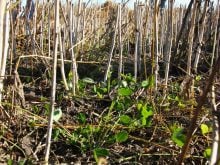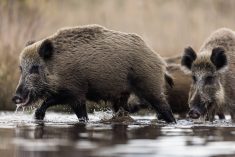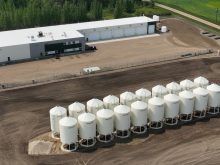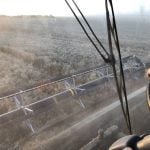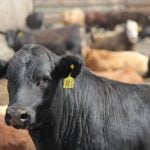Saskatchewan Wheat Pool’s accountants might have to rummage through their stationery supplies when it comes time to write the annual report for 2003-04.
For the first time in six years, an important part of the financially challenged grain company’s financial statement could be written in black ink, rather than red.
“We now believe we are in striking distance of achieving the first positive bottom line for a full fiscal year since 1998,” chief executive officer Mayo Schmidt said last week.
That year the company turned a profit of $16.3 million. Since then, the pool has lost money every year, recording an average annual net loss of almost $58 million, and gone through a major financial restructuring that saved it from bankruptcy.
Read Also

Environmental farm group has Ottawa’s attention
In 2021, Farmers for Climate Solutions published a report on how Canada should reduce emissions from agriculture. Not long after, the federal government implemented most of the recommendations in the report.
However, while the company is trumpeting the prospect of a positive bottom line, strictly speaking it’s the second-from-the-bottom line.
The pool’s net loss for the third quarter of 2003-04 was $9.1 million, pushing its accumulated loss for the first nine months of the fiscal year to $23.7 million.
That bottom bottom-line number is expected to remain a negative at the end of the fiscal year.
The line the pool is excited about is “net loss from continuing operations,” a figure that doesn’t include $21 million in costs associated with businesses the company is no longer involved in, notably money-losing Heartland Pork.
The net loss from continuing operations was $4.8 million in the third quarter and totalled $2.4 million for the year to date.
That’s the number Schmidt said could end up on the plus side of the ledger, depending on a number of factors including sales of agri-products during the fourth quarter.
Previously, the pool had been saying it expected to break even on net income from continuing operations, but that has changed in part due to recent rains throughout Saskatchewan.
Schmidt said the wet conditions could mean increased weed and disease problems, which could boost demand for crop protection products.
“This should bode well for our agri-product business in the final six-week sales period,” he told market analysts and reporters during a teleconference call to discuss the company’s third quarter results.
Those moisture conditions also point to a good crop and the prospect of increased grain handling volumes in 2004-05, he added.
“Should that occur, we look forward to an even stronger year next year.”
The third quarter results marked the fourth consecutive quarter in which the company has registered a year-over-year improvement in earnings and cash flow.
Earnings before interest, taxes, depreciation and amortization were $11.9 million, compared with a loss of $5.9 million in the same period a year ago. For the first nine months of the fiscal year, EBITDA was $46.4 million, compared with a loss of $5.4 million.
Cash flow from continuing operations was $1.8 million during the quarter, an improvement from a loss of $18.6 million a year ago. For the year to date, cash flow was $21.5 million, a dramatic turnaround from a loss of $22.2 million in the same period last year.
Here are some of the highlights from the pool’s quarterly report:
- The pool shipped 1.5 million tonnes of grain from its primary elevators, up 81 percent from the same quarter last year. Grain handling margins were in the range of $20 to $23 per tonne, up from $15.50 in 2003. That reflects increased volumes of higher-margin export grains this year.
- Sales of seed were double the year before and sales of crop protection products were 83 percent higher. In part, that reflects a return to more normal purchasing patterns from the previous year, when farmers bought many of their farm inputs in the second quarter due to uncertainty about the pool’s future.
- Quarterly sales in the agri-food processing division were $26.9 million, down from $31.1 million, while earnings dropped by half to $2.6 million. Lower oats prices resulted in lower volumes and reduced margins for Can-Oat Milling.
- Gross sales and service revenue for the quarter was $164.6 million, up from $124.8 million a year ago.
- Long-term debt on April 30 was $263 million, down slightly from $265 million a year earlier. The pool will use proceeds from the sale of Heartland to repay $10 million in senior bank debt and $8 million in various short-term borrowing by year-end.
- The sale of Heartland and the pending sale of the company’s aquaculture operations will bring to an end the sell-off of assets that has been ongoing for several years.





